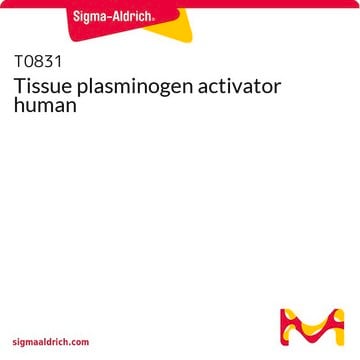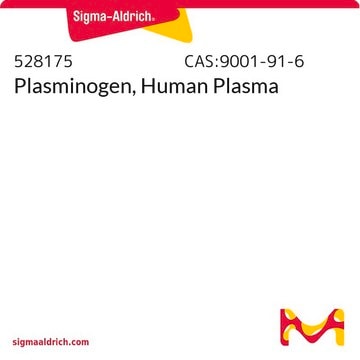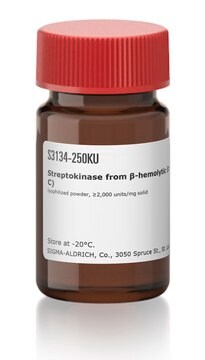P9156
Plasminogen from bovine plasma
lyophilized powder, ≥2.0 units/mg protein
Synonyme(s) :
Profibrinolysin
About This Item
Produits recommandés
Source biologique
bovine plasma
Forme
lyophilized powder
Activité spécifique
≥2.0 units/mg protein
Concentration
2-7% protein (biuret)
Adéquation
not suitable for streptokinase determination by clot formation procedure
Application(s)
histology
Température de stockage
2-8°C
Informations sur le gène
cow ... PLG(280897)
human ... PLG(5340)
Actions biochimiques/physiologiques
Autres remarques
Définition de l'unité
Forme physique
Reconstitution
Code de la classe de stockage
11 - Combustible Solids
Classe de danger pour l'eau (WGK)
WGK 3
Point d'éclair (°F)
Not applicable
Point d'éclair (°C)
Not applicable
Équipement de protection individuelle
Eyeshields, Gloves, type N95 (US)
Certificats d'analyse (COA)
Recherchez un Certificats d'analyse (COA) en saisissant le numéro de lot du produit. Les numéros de lot figurent sur l'étiquette du produit après les mots "Lot" ou "Batch".
Déjà en possession de ce produit ?
Retrouvez la documentation relative aux produits que vous avez récemment achetés dans la Bibliothèque de documents.
Les clients ont également consulté
Notre équipe de scientifiques dispose d'une expérience dans tous les secteurs de la recherche, notamment en sciences de la vie, science des matériaux, synthèse chimique, chromatographie, analyse et dans de nombreux autres domaines..
Contacter notre Service technique








